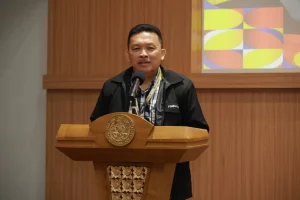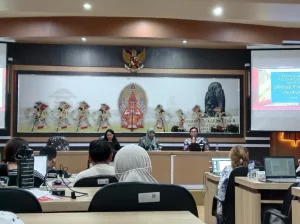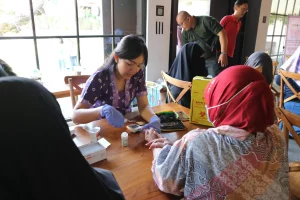The research aims to analyze the impact of disasters that occurred in Sumurup Village, Trenggalek Regency, East Java, Indonesia. The descriptive impact analysis is used as a research method to analyze disaster events in assessing disaster risk factors and as a basis for early-stage designs to reduce its impacts.
Almost every year during the rainy season, landslides always occur in Sumurup Village. The high intensity of rain causes landslides which block the connecting road between Trenggalek Regency – Tulungagung Regency that passes through the road in Sumurup Village. This landslide was caused by the collapsed steep cliffs right next to the road not being able to withstand the heavy rain. As the result, for almost 2 days the residents’ activities have stopped because the road can only be passed by motorcycle alternately. A 15-meter high cliff on Sumurup Village Road, Bendungan Trenggalek District, collapsed and blocked the road. Landslide material in the form of muddy soil and rocks blocked the access road for residents’ mobilities. Additionally, the landslide almost collapsed the electric cable poles on the side of the road and blocked the road.
A victim reported that 38 houses and 1 mosque have been abandoned by the owners due to the poor conditions. People were evacuated to other RT (Neighborhood Association) and villages. In line with the statement, the Sumurup Village Headman said that the landslide often impacted the roads during the rainy seasons because of the steep cliffs and easily-decomposed soil when exposed to high water intensity. None of the plants on the cliffs are able to store a lot of water discharge and can hold the soil. Most of the areas are covered with pine trees that cannot absorb water properly. Severe disasters can be prevented by paying attention to the environment and climate conditions, including observation of the physical condition of the land and rainfall to raise public awareness in the rainy season with high water intensity.
The landslide in Sumurup village also occurred due to the pattern of the houses on slopes and steep cliffs, for instance, the landslide which destroyed two houses, one house was buried by the ground and one house almost collapsed due to landslides. In the beginning, the owners did not aware of the landslides until people heard a blast that buried the house. Fortunately, there were no fatalities, but almost all of the furniture in the house was razed to the ground and could not be saved.
Apart from the landslides, Sumurup Village is also vulnerable to moving ground. It was caused by the lack of land cover and thin soil which make the cliffs and hills around Sumurup Village vulnerable to soil erosion, which leads to landslides.
The dilemmatic situation faced by the community of Sumurup Village is not an option. That means, from the beginning, they are willing to relocate. However, the assets of land and house ownership raise another historical attachment problem considering the ancestors have lived in that area for a long time. Despite living in the disaster-prone and vulnerable area to landslides, they choose to stay. Mitigation and preparedness of people living in disaster-prone areas need to be improved to prevent and overcome the impacts of disasters. Community knowledge and their capacity in disaster management need to be a special concern as a guide to stay in disaster-prone areas.
Authors: Rizkyah Isnaini, Moses Glorino Rumambo Pandin, Christrijogo Sumartono Waloejo, Dina Sunyowati









